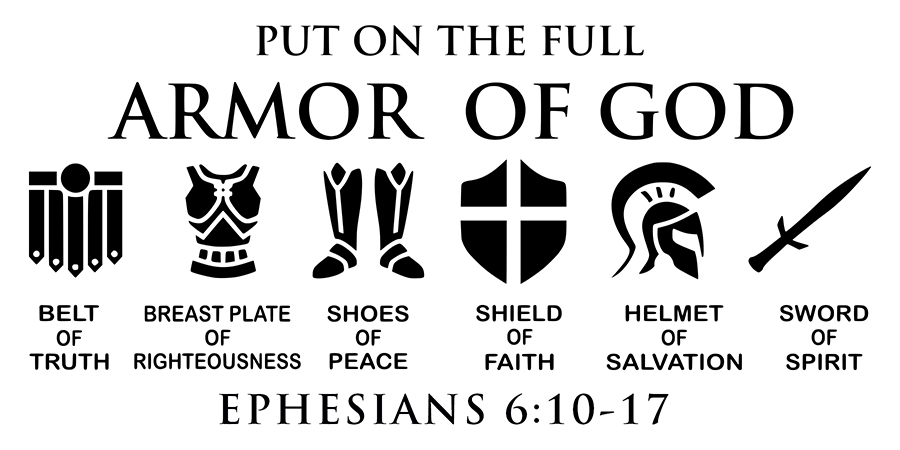You are in Beware the Wolves -> List of False Teachings
The Bible is composed of many different styles of writing. Some parts of Scripture (including Bible prophecy) are written in symbolic/figurative language instead of literal language. Furthermore, Bible prophecy can also have literal or spiritual fulfillment. Wrongfully interpreting symbolic/figurative statements in Scripture as literal is the source of many false teachings and results in bizarre interpretations of Bible prophecy (particularly related to matters of end-times eschatology). For example, many false teachers (yes, the “wolves” again) teach and preach that all Bible prophecy must be fulfilled literally; however, I have already shown you that this is not the case.
The practice of wrongful interpretation goes way beyond just Bible prophecy, as discussed by Wayne Jackson: [1]
An Introduction to Bible Figures of Speech
How dreary human communication would be were it not for the figures of speech that adorn language. In fact, it scarcely would be possible to convey ideas meaningfully if figurative speech were not a part of our vocabulary.
Adam’s first recorded words contain some thought figures. Of Eve he said, “This is now bone of my bones, and flesh of my flesh …” (Genesis 2:23). This delightful creation was much more than mere “flesh” and “bones,” but on this occasion she was represented by two principal elements of her physical composition.
Some of the initial words of the Creator to Adam were of a figurative thrust. To the first man the Lord warned (with reference to the forbidden fruit): “… in the day that you eat thereof, you shall surely die” (Genesis 2:17). That Adam did not literally die the day of his sin (though the aging process commenced from the time of his expulsion from Eden) is apparent, for he ultimately lived to the age of 930 years (Genesis 5:5). The expression “die” doubtless had a spiritual significance beyond that of physical degeneration. “Death” also signifies a religious or moral separation from fellowship with God (cf. Isaiah 59:1-2; Ephesians 2:1).
One should not be surprised, therefore, that the Holy Scriptures abound with figures of speech. This reality does not detract from the value of divine communication through the Scriptures; rather, it enhances the power and beauty of God’s Word.
And: [3]
How Do I Distinguish the “Literal” from the “Figurative”?
“I do not understand why ministers will teach that one passage in the Bible is ‘literal,’ while they say that another one is ‘figurative.’ For instance, in one of your articles you argue that the ‘days’ of the creation week are literal (twenty-four-hour days). On the other hand, you say that the ‘1,000 years’ mentioned in Revelation, chapter 20, is ‘figurative.’ Why do you go back and forth from literal to figurative?”
Your question is a very reasonable one and we are happy to clarify this matter.
The Scriptures abound with a great variety of figures of speech. In 1899, E.W. Bullinger produced a massive work of more than 1,100 pages dealing with biblical figures of speech. Therein he classified some 200 different figures, many of which were subdivided into different variations, so that the total number catalogued finally was more than 500 (Bullinger, p. ix). [4]
A Figure Defined
A figure of speech occurs when a word, phrase, or sentence is employed in a sense other than the usual or literal sense it has naturally. The purpose behind the use of a figurative expression is to intensify the idea being conveyed. The figure adds emphasis, feeling, and color to the thought presented. It is a mistake to assume that when a figure of speech is utilized the force of the statement or argument is weakened; actually, just the reverse is true.
It is very important, however, to be able to distinguish the figurative from the literal. A failure to discern the difference, in various biblical contexts, has resulted in much error.
How to Identify Figurative Language
Just as “beauty” is said to be “in the eye of the beholder,” unfortunately the identification of figurative language in the Scriptures is sometimes “in the eye” of the interpreter. By this we mean there is considerable confusion in the religious world in the matter of distinguishing between literal and symbolic terminology. There are, however, some common sense principles which may (and must) be employed in the identification process.
Words must be interpreted literally unless the sense implies an impossibility.
For example, John closes his Gospel account with the declaration that should all the deeds of Jesus, during his earthly ministry, be fully recorded, not even the world itself could hold the books that might catalog them (Jn. 21:25). This language is acknowledged as “hyperbole,” “hyperbolic.”
A hyperbole (meaning “to throw above”) is an exaggeration for the purpose of emphasis. John’s design was to show that the miracles delineated in his inspired narrative were merely representative of what the Savior did; the list of only seven signs that the apostle mentioned was far from exhaustive.
Words must be interpreted literally unless the sense implies a contradiction.
In the book of Revelation, the final abode of the redeemed is depicted as a “holy city” (cf. Heb. 11:10,16).One of the features of that city was its wall, that rested on “twelve foundations,” upon which were written the names of the “twelve apostles” (Rev. 21:14). The numeral “twelve,” as used here, cannot be literal, for there were thirteen apostles (the original twelve, minus Judas, plus Matthias, plus Paul). The number “twelve” came to be used as a symbol of the apostolic group, even when the number “twelve” was not precise. After Judas died, yet before Matthias was chosen, Jesus (following his resurrection) appeared to “the twelve” (1 Cor. 15:5). “Twelve,” therefore, in Revelation 21:14 is employed symbolically for the apostolic company, without literal, mathematical precision.
Words must be interpreted literally unless the sense implies an absurdity.
The Scriptures use the term “face” dozens of times in a figurative sense, e.g., face of the deep (Gen. 1:2), face of the earth (Gen. 1:29), face of the ground (Gen. 2:6), etc. Obviously, to press the word “face,” in a literal sense, would imply an absurdity with reference to the sea, the earth, etc. Clearly, then, these uses are figurative.
The nature of a biblical book may provide a clue, suggesting that the student is to watch for an abundance of figures of speech.
This is true of certain Old Testament books, such as portions of Ezekiel, Daniel, and Zechariah. But there is no clearer example of this than that of the concluding book of the New Testament, Revelation.
The apocalyptic document begins with the notation that Christ “signified” the message, via his messenger, to the apostle John (1:1). The verb “signified” derives from semaino, which in early Greek meant “to show by a sign, indicate, make known, point out” (Liddell-Scott, p. 1448). [5]
Vincent cites John’s use of the term in his Gospel (12:33) where Jesus, in symbolic fashion, identified the method of his death by means of the expression “lifted up,” which hinted of the crucifixion (cf. also Jn. 21:19). He further notes that the term “signified” is “appropriate to the symbolic character of the revelation” (Vincent, p. 564). [6]
What About the “Days” of Genesis?
Now regarding the original question, how is one able to say that the “days” of the creation week are literal days, while the “1,000 years” of Revelation 20:1ff represents a figure of speech? The answer is this: by the respective contexts of the two portions of Scripture, and the language considerations found therein.
- The “days” of the creation week are divided into periods of light and darkness (vv. 4-5). The “days” are distinguished from “years” (v. 14). And the “days” are subsequently defined by Moses as the same type of “day” as the Sabbath which the Hebrews were required to observe (Ex. 20:11). There are other reasons for the view that the creation days must be literal, but this should suffice for the present. See our “Archives” section for June 15, 2000 (The Creation “Days” —Literal or Figurative.
- Regarding the “thousand years” of Revelation 20, it should be observed that the opening of the book itself provides caution that this is a document characterized by symbols (see “signified” – 1:1). In addition, the “thousand years” of Revelation 20 is nestled in the midst of a number of other dramatic figures —a pit, a great chain, the dragon/serpent, thrones, a beast, a mysterious “mark,” resurrections, etc. Why should the pit, chain, dragon, etc., be viewed as figures, and yet the “thousand years” be singled out as literal? That defies common sense. The fact is, the numeral “thousand” is found more than twenty times in Revelation, and not once is it employed in a literal sense. In Chapter 20, the most likely interpretation of the number is that of “completeness.” As William Milligan observed: “‘[T]he thousand years’ mentioned in the passage express no period of time. They embody an idea; and that idea, whether applied to the subjugation of Satan or to the triumph of the saints is the idea of completeness or perfection” (Milligan, p. 913). [7]
There are, therefore, sound exegetical reasons for making a distinction between the literal “days” of Genesis 1, and the figurative “years” of Revelation 20.
The reader who pursues truth must be able to discern for themselves where wrongful symbolic/figurative interpretation is being made and not just blindly believe whatever they hear taught or preached as biblical truth. As I said, this only touches on this subject. I highly recommend reading the book Biblical Figures of Speech by Wayne Jackson.









